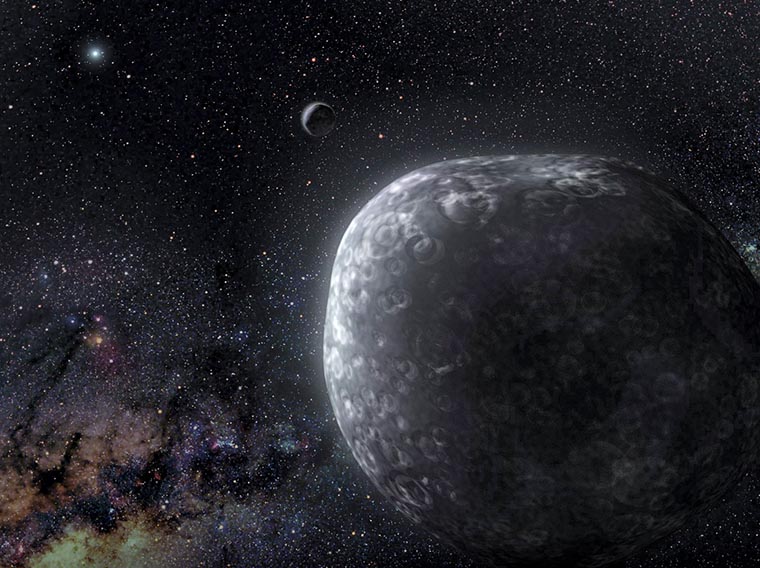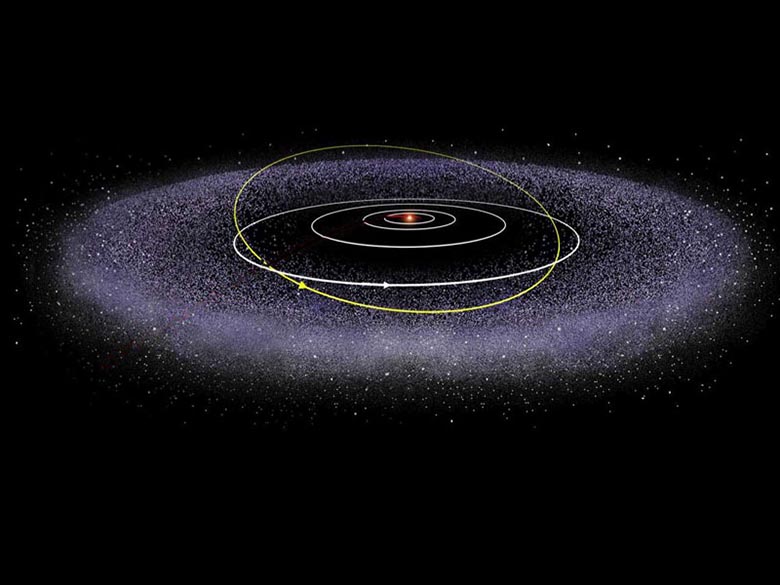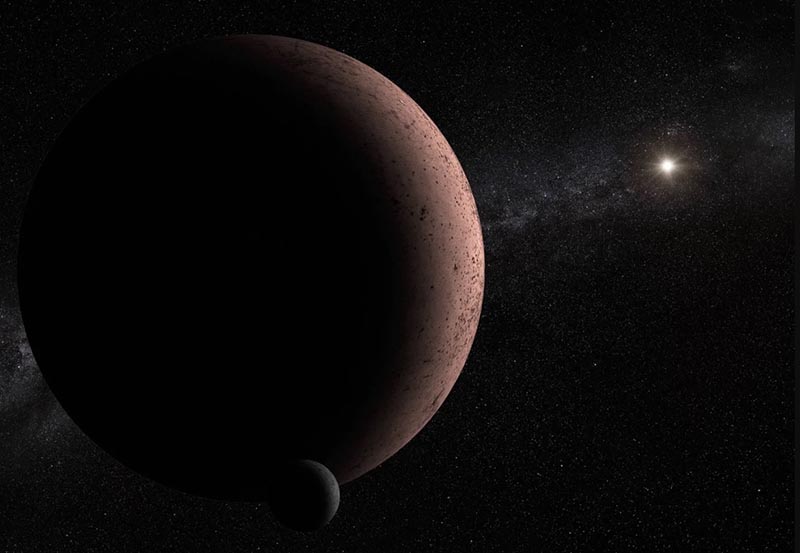The Kuiper Belt surrounds the Solar System and is an integral part of it. Scientists still don’t know how exactly it got formed, but it probably originated from the leftovers of the materials that formed our Sun and planets.
- Consisting of many asteroids and other small celestial bodies, the Kuiper Belt is in many ways similar to the asteroid belt between the orbits of Mars and Jupiter. But it’s located far beyond the orbit of Neptune, and it’s about 20 times wider.
- Another important difference between the asteroid belt and the Kuiper Belt is that in the first one asteroids consist mostly of rock and metals but in the second one of frozen gases and ice mainly, including water ice. Yes, there’s water there!
- Pluto is the largest of the Kuiper Belt objects. Another dwarf planet, Eris, is almost as large as it is, and until 2015, scientists even thought that Eris was larger than Pluto, but recent studies have revealed the truth.
- The study of the Kuiper belt is extremely difficult at the current level of technology. The distance from the Earth to it exceeds the distance from the Earth to the Sun by 55 times, and the spacecraft will take several decades to get there.
- The observation of perturbations in the orbits of some transneptunian objects in the Kuiper Belt has given rise to the theory that it hides another massive planet, which hasn’t been discovered yet. Perhaps, it’s a gas giant like Uranus or Neptune but smaller.

- The Kuiper Belt is not the boundary of the Solar System. Even further away is the scattered disk, probably also made up of the leftovers of materials that formed the Solar System billions of years ago, and even further away is the Oort cloud, which stretches for 1-2 light-years. However, the existence of the Oort cloud hasn’t been proven yet.
- Perhaps, some moons of the planets of the Solar System were formed in the Kuiper belt – Phoebe and Triton, for example, which are the moons of Saturn and Neptune. Probably, they were captured by the powerful gravity of these gas giants at some point.
- Some objects of the Kuiper Belt de facto belong to dwarf planets, although officially this status hasn’t been assigned to them yet. This list includes Sedna, Orcus, Quaoar, Ixion, and a dozen other celestial bodies. Moreover, astrophysicists claim that the number of dwarf planets in the Kuiper belt can reach up to 250-260.
- Previously, it was believed that comets come to the inner part of the Solar System from here. Modern science, however, believes that this is not the case and that comets come from the Oort cloud.
- Hundreds of small celestial bodies in the Kuiper Belt are in an orbital resonance with Neptune. The gravity of this planet is strong enough to affect them, despite the vast distance between them.
- Scientists have already discovered more than 1070 large objects in the Kuiper Belt. According to their calculations, it can contain more than 70 thousand objects with a diameter of more than 70 miles (100 km) and up to 450 thousand objects with a diameter of more than 30 miles (50 km).
- American astronomer Frederick C. Leonard suggested the existence of lots of other celestial bodies beyond the orbit of Neptune in 1930. The first Kuiper Belt objects were discovered in 1992.
- Hawaii has one of the best observatories in the world, located on top of the Mauna Kea volcano. The existence of the Kuiper belt was proved with the help of its equipment.
- The minor planets of the Kuiper Belt are called the names of deities from the mythology of different peoples. For example, Orcus is the god of death in the Etruscan pantheon, Gonggong is the Chinese god of water, and Ixion is the name of a king from the mythology of Ancient Greece.
- A planetoid called 2018 AG37, also known as FarFarOut, is located here, this is the most distant object in the Solar System. It has a diameter of about 250 miles (400 km). The distance from the Sun to FarFarOut is about 130-150 times the distance from the Sun to the Earth.


